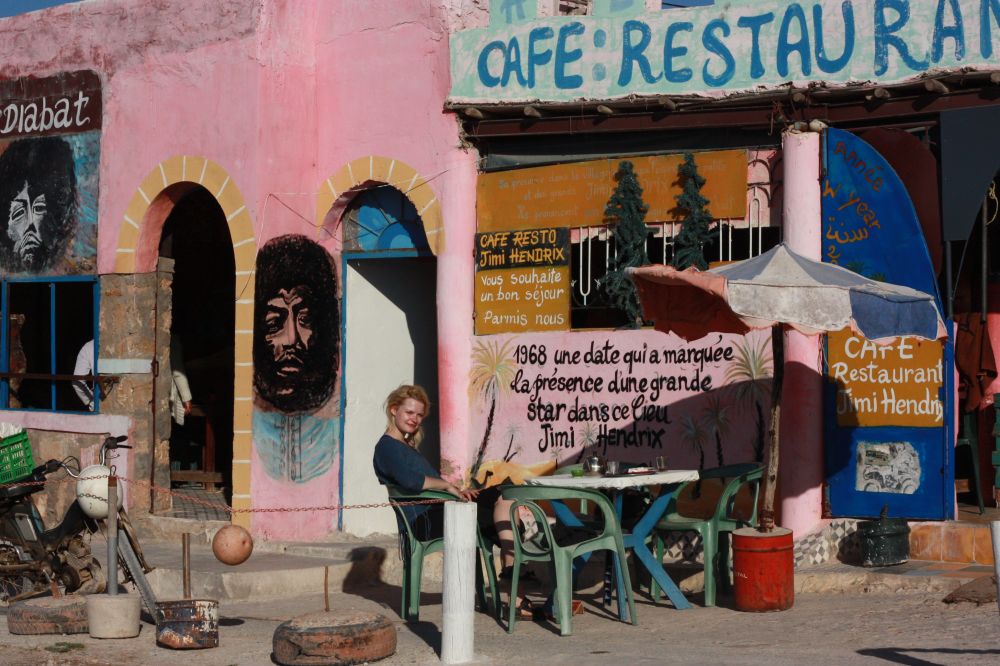Why did I choose to relocate to Morocco? Given the frequency of this question, I’ve decided to pen down some reflections on my continuous residence in Morocco since 2015, as well as express my observations on Morocco and its rich culture.
Why I came to Morocco and decided to stay?
First time I visited Morocco while travelling solo. I was attracted by the colours and the beautiful chaos that makes you feel alive daily. I remember feeling like in a movie where you don’t know what will happen the next day. As I was always a curious traveller and a journalist, I was a bit bored with my life in Europe (back then, I was living in Amsterdam, and originally I am from Lithuania). Morocco looked so exotic and, at the same time, familiar that I decided to try it and call this country my home. There were many ups and downs, hate and love…
However, after I started my blog “Blondie in Morocco”, it slowly became my travel planning platform for curious travellers. I became a private travel planner for independent, curious travellers. I realised it’s a real home now here.
What I learned about Moroccan culture
I could talk for endless hours about what I learned about Moroccan culture, but in short… The “Inshallah” word very much surrounds Moroccan culture and lifestyle. “Inshallah” in Arabic means “God willing” or “if God wills”. “Inshallah” refers to events one hopes will happen in the future. Initially, I was so frustrated when I wanted to arrange a meeting and someone said, “Tomorrow at 5 pm, “Inshallah”. Then, after living in Morocco for a while, I understood that things don’t happen as they do in Europe. I learned to be more patient and relaxed. You can read more about it in my article The art of “Inshallah” in Morocco.
Moroccans are also very social and welcoming; it’s easy to make friends. People are generous with each other, even with people they don’t know. Also, an interesting fact is that Moroccans are so bilingual; it’s because of their history; many can speak not only their Arabic dialect, Darija, sometimes even the old Amazigh language, which became an official language in 2011, but also French, English, and Spanish, often mixing in one sentence French, Darija and English. You can read more about languages in Moroccco in my post How much French do you need to survive in Morocco?
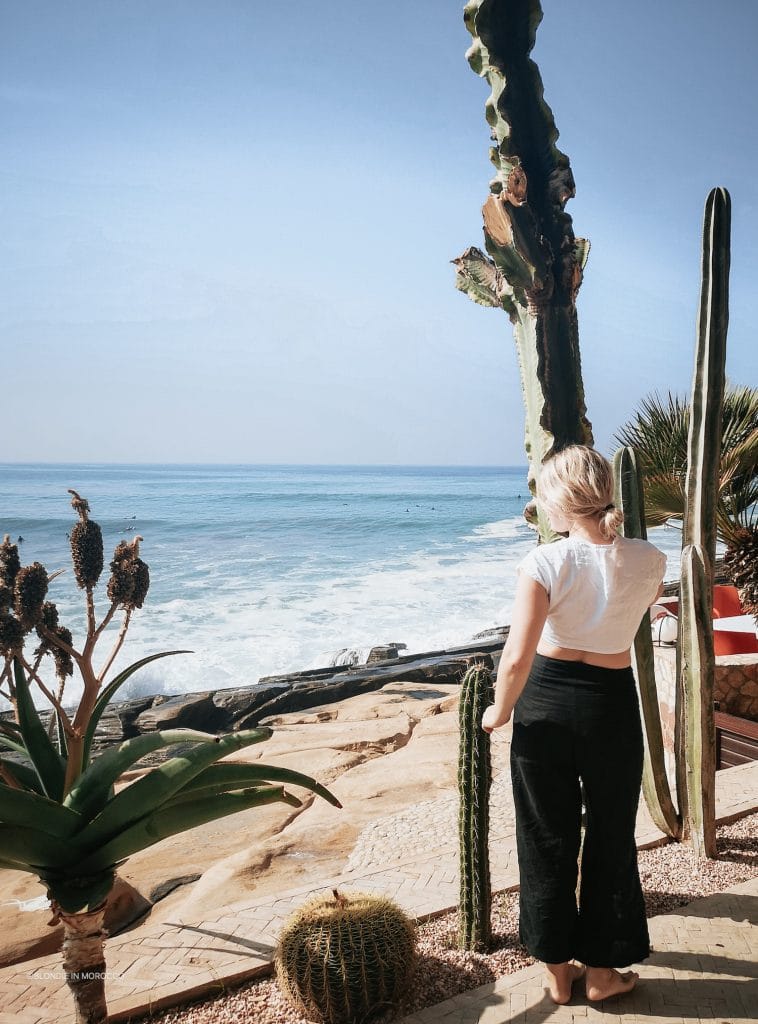


Where do I go when I need an escape?
I love driving, and driving is my escape. Morocco is not a destination but a road trip itself and has so many breathtaking roads; driving them is an absolute blast. My favourite route is the coastline road from Essaouira to Taghazout; at some point, you will be going the mountain road by the beaches – wow, experience. Or another one, in the Noord of Morocco, leading from Ceuta, the Spanish city, to Tangier. While driving, you can see the continent of Europe and Tarifa, the Spanish town. You will also encounter endless windmills, green scenery, lakes and mountain villages.
Closer to Marrakech, I adore driving the road leading from Asni to Lalla Takerkoust – passing the Berber villages; you will encounter different kinds of harvesting fields and the Kik Plateau mountain pass where people are doing paragliding activities.
Coming to Morocco? Book your consultation
Book your 45-minute 1:1 video consultation call, and I will answer all your questions about Morocco, review your itinerary or create one together.
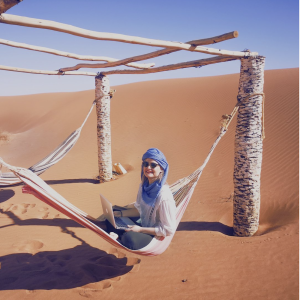

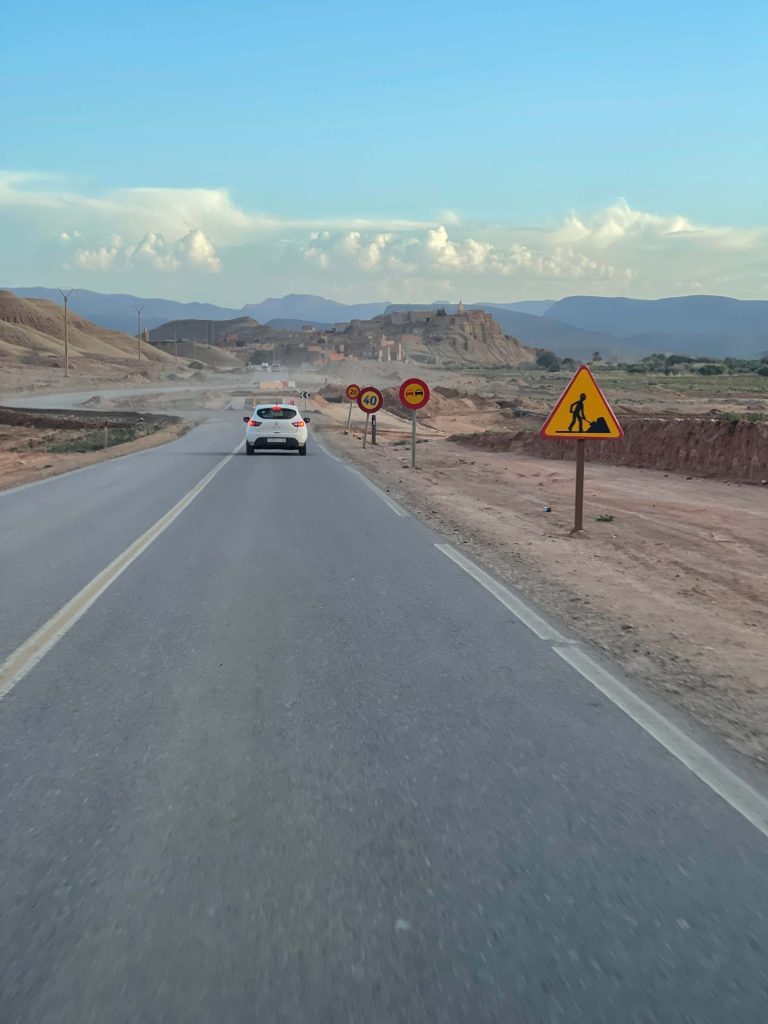

least touristic but feels most like Morocco
Morocco is becoming a more and more popular destination. If you want city experiences, choose Fez instead of Marrakech. The Medina of Fez is beautiful, rawer and less touristy. I am not saying Marrakech is a wrong choice; it is just more touristy as everyone visiting Morocco also visits Marrakech.
Near Fez is located a Moulay Idriss town that travellers often pass by to visit Volubilis archaeological sites (read more in my post Visit to Ancient Roman ruins of Volubilis in Morocco). The holiest city of Morocco, until 2005, didn’t allow non-Muslims to stay overnight. The town is situated on a hill and surrounded by lush green hillsides. I’ve been to Moulay Idriss a few times and always felt the unique magic of the town. Especially on more cloudy days, the city is partly hidden in white clouds.
I also love the part of the Sahara desert – the Erg Chegaga dunes close to M’Hamid El Ghizlane town. M’hamid village is “The end of the road” after the village road finishes. The Algerian border is only 24 km away from M’hamid. I love Erg Chegaga because it’s such a wild experience. You can be alone in the desert and meet the sunset without seeing other travellers around. In addition, the M’hamid town itself is a unique experience. Living in Morocco for 7 years, I thought this place was exotic and had different vibes. I felt more like I was on another planet where time and regular life didn’t exist. Read more about the different parts of Sahara desert in my article Merzouga vs Zagora for the Sahara desert trip in Morocco?
Coastline – the remote Tafedna village (close to Essaouira) is a hidden gem for beach lovers or Imsouane if you want to surf. I also love the fisherman village Taghazout, but it has become trendy recently. The town didn’t lose its charm but might not be a good match if you want to avoid tourists. My secret spot is located close to Essaouira town and Sidi Kaouki village – if you put the “Sidi M’bark Waterfalls” on GPS, you will arrive at the nature spot where the stunning ocean view frames beautiful dunes. Walking further, you will discover a small secret beach surrounded by dunes, local dogs, and donkeys.
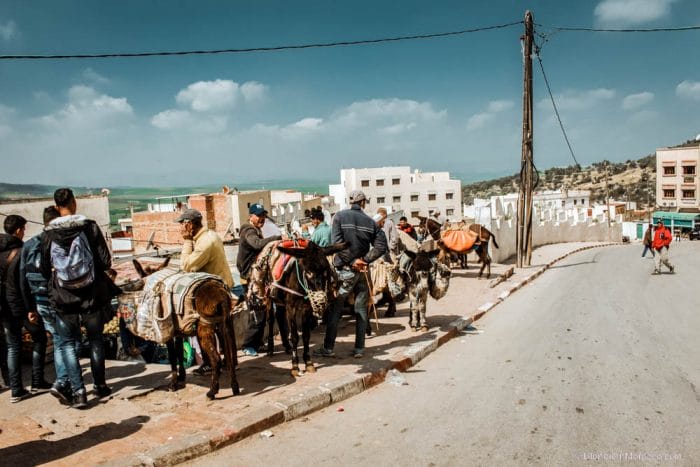
places in Morocco where you feel like you are elsewhere
People are often surprised to hear that there is snow in Morocco. And when it’s winter, locals love visiting Ifrane, a small town set up in the Middle Atlas Mountains, located close to Fez. It’s known for its snow, alpine-style architecture, ski slopes, and forests. Each time I visit Ifrane, I get confused about where I am. Read more about snow in my post Yes, there is snow in Morocco.
A few other small places in Morocco remind me of Asia because of the beautiful lagoons: the lagoon of Oualidia city (the capital of oysters) and the peaceful Tafedna village close to Essaouira. You would also be surprised by the big cities like Casablanca or the capital Rabat – such modern cities. The business hub of Casablanca is expanding so fast, and the new skyscraper district of Casablanca reminds me of Dubai.

most exciting and most ‘Moroccan’ food or drink I recommend trying
I am a big fan of Moroccan street food! Of course, you must try the most traditional Moroccan dishes – tagine and couscous (the latter is only on Fridays!), but don’t forget to include street food. List of my favorite street food is also in my post List of my favourite Moroccan street food.
Harira is a tomato, lentil, and chickpeas soup. I love eating harira with a Moroccan pastry called Chebakia, fatty dates and boiled eggs. Best harira is always served at the local restaurants, where they make it around 5-6 pm. If you notice many small soup balls on the restaurant counter, it’s time for Harira.
Msmen is a flaky, buttery Moroccan bread/crepe/pancake made with wheat flour, semolina, olive oil, and butter. In Morocco, you can buy freshly made Msmen only in the afternoons or for breakfast. My favourite Msmen is with spices and filled with cheese or honey. You will find Msmen making stands in many street food restaurants, often served together with Harira soup.
Ok, so this dish definitely will scare vegetarians. Karin or Hargma (sometimes referred to as trotters in English) is a Moroccan dish that not every Moroccan like. My friends call it “the hangover food”, perfect for eating at night after many drinks. Karin is a cow’s, sometimes lamb’s, feet stewed in a sauce together with the chickpeas. It is a fat and greasy dish in many small local restaurants and is mainly served in the evening.
The most typical drink in Morocco is a sweet mint tea, often served with loads of sugar. In the Moroccan cafés, locals order two kinds of coffee: Coffee Noir or Nous Nous. Café Noir is a small cup of espresso. Nous Nous is made from half milk and half espresso. You will not find Nous Nous name on the menu, as it is an Arabic way to say “half-half”. So, if you ask for it, Moroccans know they can serve you as a local, not a tourist.
Try the traditional Moroccan breakfast with my adored omelette khlea – fried egg omelette with dried beef. In addition, ask to bring it with a small plate of local honey, Amlou, argan oil, olive oil and cheese (I call them breakfast tapas), which you will eat with local bread. As well include nous nous coffee and a unique avocado juice cocktail.
P.s. will share the best breakfast spot for this in the new part of Marrakech – Espace fruit Othman street breakfast restaurant.

must-try, least well-known experiences
– Hiking. Whether you are a professional hiker or just a beginner who can walk short distances – choose any beautiful nature spot and discover it by walking. If next to Marrakech, head to Imlil village (1 h away), Ourika valley, Lalla Takerkoust lake etc. You can learn more about hiking in Imlil in my post My hiking and picnic at 2km above sea level experience in Imlil, and more about Imlil village in the article The essential guide to Imlil village, Morocco.
– Eating fresh fish. If you are a seafood lover, head to the Essaouira fish market (at the port), choose and buy freshly caught fish. After buying it, in the dock (or Medina), find a place for grilling and ask to grill for fish, eat at the spot and share leftovers with local cats—much more fun than eating at a traditional restaurant.
– Surfing. It doesn’t matter if you have never tried surfing or practising it for a long time. The coast of Morocco is famous for its excellent surfing spots. The best places are around Taghazout and Essaouira, with affordable surfing schools and teachers. Look at surfing as a perfect sports activity, something that is as casual to do at the beaches of Morocco as playing ball games.
-Hammam. A hammam is a type of steam bath or sauna that is very popular in Morocco. Until now, in some villages, people don’t have hot water or showers and, a few times a week, use local hammams instead. There are two types of hammams: private and public. To have the experience, I would suggest trying the public hammam – but only if you are comfortable being half-naked with other ladies. Trust me, after the real, local hammam, you will feel like you lost 10 kg of old skin.
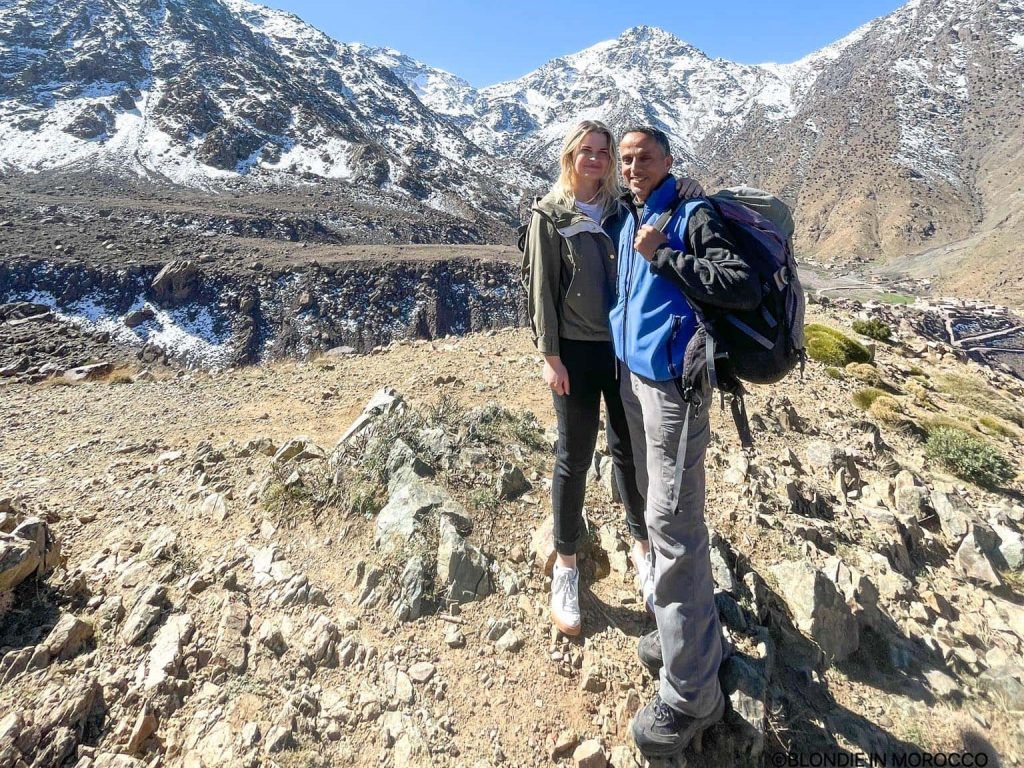
most essential items to bring to Morocco
If you could only take two items, I would say it must be a scarf – a bigger light that you can use to cover your head/face in the Sahara desert, or protect from the sun or cover your shoulders when you feel too naked or cold. As well, put it on the floor to sit down in the local shop while bargaining for your dream carpet price. In Morocco, the best deals are made with patience, taking time, sitting, drinking tea and talking about life before you get to the price details.


Morocco in three words
Inshallah | Welcoming | Vibrant
Main feature photo by by Rasa Ulinske | Dew photography

